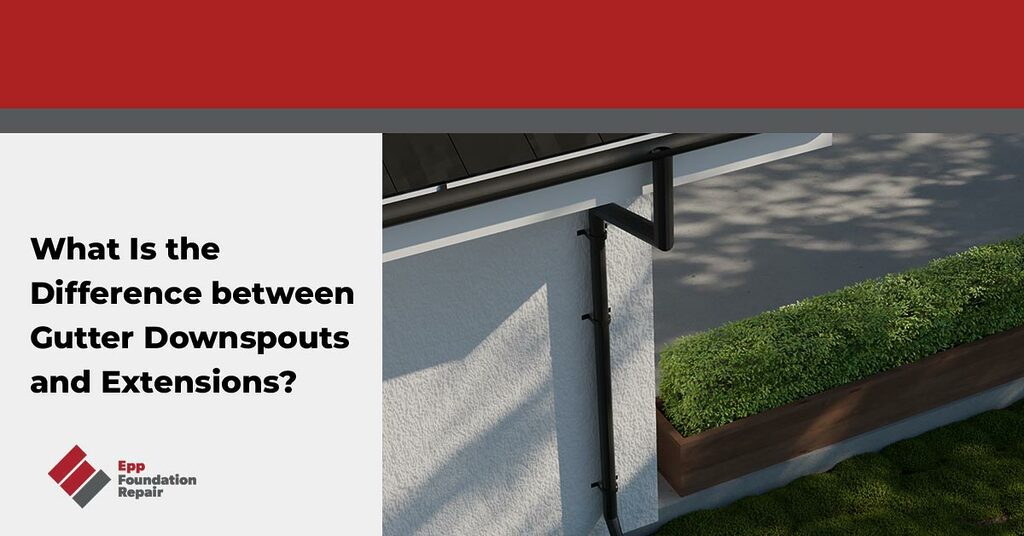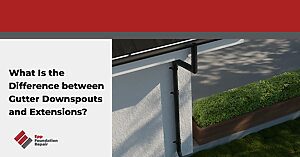When it comes to maintaining a sturdy and well-functioning roof, the distinction between gutter downspouts and extensions might not be something you’ve pondered extensively. Yet, understanding the subtle but significant differences between these two elements can be crucial to ensuring your home’s foundation remains secure against water damage.
In this blog post, we’ll delve into the nuances of gutter downspouts and extensions—shedding light on each component’s distinct role, how they operate together to safeguard your abode, and why you shouldn’t overlook their maintenance. Whether you’re a new homeowner or have been in the trenches of property management for years, this blog will equip you with critical insights to help you better protect your investment from the whims of weather.
What Is the Difference between Gutter Downspouts and Downspout Extensions?
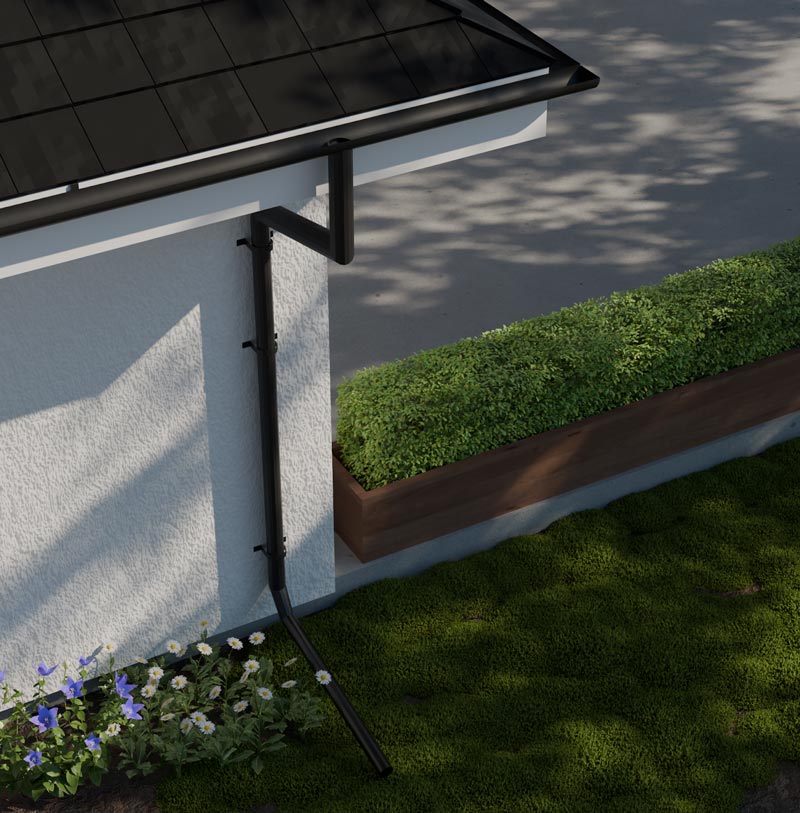
Gutter downspouts and downspout extensions are not so much different as they are complimentary. Like an extension cord may help you plug in your lamp to a distant outlet, a downspout extension helps to extend a downspout so rainwater is carried further away from your home before release.
What Are Gutter Downspouts?
Gutter downspouts are vertical pipes, usually made of aluminum, attached to the side of buildings that carry rainwater from the gutters to the ground. A gutter system is integral to a structure because it protects the roof, walls, landscaping, and foundation from water damage during heavy rainfall and snowmelt.
What Is the Purpose of Downspout Extensions?
For a gutter system to successfully protect a building’s foundation, it must allow the water to be deposited at least ten feet away from the building. Downspout extensions help to do just that. Downspout extensions extend the length of a gutter downspout, allowing you to control where the water empties and protect your home.
Why Are Gutter Downspouts and Extensions Important?
- Roof – A well-installed and maintained gutter system prevents water, snow, and debris from collecting and pooling on your roof. It helps to extend the life of your roof by avoiding issues like rot and mold.
- Walls – Without a gutter system, rainwater and snowmelt would slide down the walls of your home. The rainwater and snowmelt would eventually damage the siding and paint of your home and lead to rotting. It can also create a buildup of moisture around the windows, damaging the window sill and surrounding interior walls.
- Landscaping – Different plants have different watering needs. Without a gutter system, you cannot control the amount of water your lawn or landscaping gets or even the intensity of the watering. Imagine sheets of water rolling off your roof and onto your newly planted flowers. Those flowers are as good as dead.
- Soil Erosion – Another problem is soil erosion. Too much water runoff from the roof can erode the soil around your home and even contribute to flooding.
- Protect the Foundation – Arguably, one of the most important reasons for having an effective gutter system is to protect your home’s foundation. When soil near your home’s foundation becomes waterlogged, or the soil begins to erode, it can cause foundation damage. You may experience increased humidity, condensation, mold, cracking or buckling of your foundation walls, or flooding in your basement. Soil erosion can cause a building’s foundation to sink unevenly, known as differential settlement, which can also cause the cracking or bowing of foundation walls and problems throughout the home, like sloping floors, sticking doors and windows, and warped framing.
Foundation repair can be costly. But this can be avoided by properly maintaining the soil around your home with an adequate water drainage system.
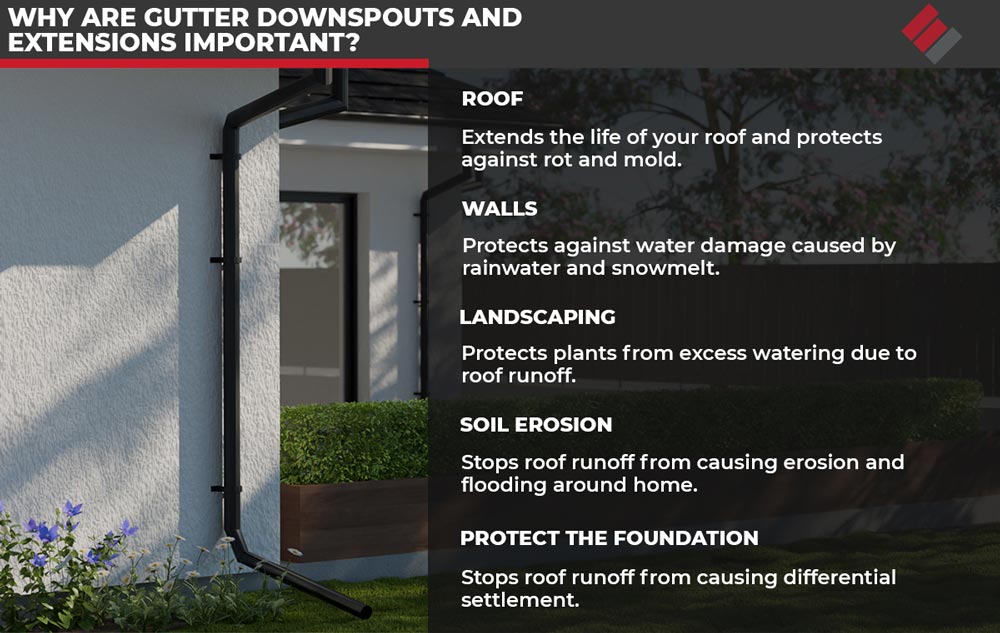
What Are the Pros and Cons of Downspout Extensions?
Downspout extensions are essential parts of a quality gutter system. But there may be some other pros you haven’t considered and some cons that, with sufficient forethought, you can resolve to create the best solution for your home.
See How a Gutter Drain Extension Can Save Your Foundation for more information.
Pros
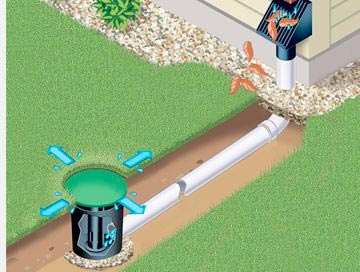
- Protect your home and landscaping. This is the most crucial pro!
- Direct water precisely to where you want it. Downspout extensions allow you to direct water away from your home’s foundation and channel it to a strategic spot like a reservoir for your irrigation system or a municipal drain.
- Multiple design options. Downspout extensions come in different styles and capabilities to match your needs and budget. From a simple pipe to stone channels and underground extenders, you will find a system that works for you.
Cons
- Some extensions may interfere with lawn care. Extended downspouts sitting across your lawn can make it difficult to cut your grass and may even be a tripping hazard.
- Some extensions are unsightly. Some DIY options may take away from the look of your home with long metal pipes running across the lawn.
- Some extensions trap moisture underneath them, creating a warm home for pests. To avoid this, consider underground downspout extensions, schedule routine pest control, or regularly remove the extensions and move the soil around to prevent pests from nesting.
How Are Downspout Extensions Installed?
There are two categories of downspout extensions: above and below ground.
Above Ground
These are the simplest form of downspout extensions since they usually attach the extension to the downspout, which rests on the ground. They come in different forms, such as the standard metal pipe, flexible pipes, roll-out tubes that deposit water when it fills up and retract afterward, and hinged flip-up pipes that move up and down with the presence or absence of rainfall.
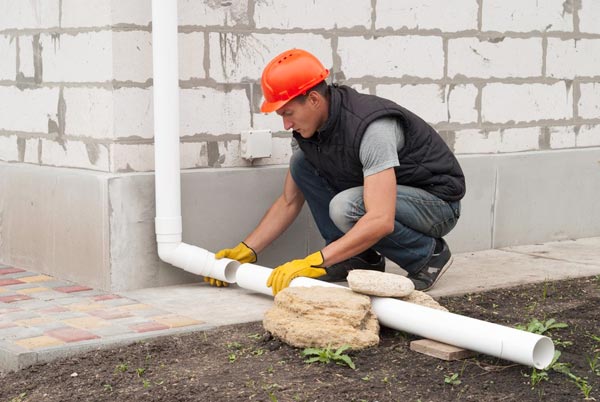
Below Ground
This option helps to provide all the benefits of gutter extensions while avoiding the cons. To install an underground gutter downspout extension, a contractor will follow these steps:
- Create a plan. Determine where the water will go while considering the yard’s slope, property lines, and more.
- Dig. The next step is to dig channels below the frost line for the pipes.
- Install. The pipes for the extensions are measured, cut, and attached to the gutter downspouts. The installation will also include filters and dry wells to ensure that debris does not clog the system and that small animals cannot enter.
Can I DIY My Own Underground Gutter Downspout Extensions?
Installing underground gutter downspout extensions is a relatively straightforward process that some have been able to DIY. However, before you attempt to install one yourself, consider the ramifications of a faulty installation. Suppose the water is diverted to the wrong area, improper materials are used, or critical products like debris filters are missing. You may then face the same problems you were trying to avoid – flooding, soil erosion, foundation damage, etc.
Getting a professional to design and construct your gutter downspout and extension system will ensure the proper drainage of rainwater and snowmelt. An expert will be able to determine how many extensions you need, the best place to deposit the water, and the suitable materials to guarantee function and longevity.
We provide various waterproofing solutions to protect your home’s foundation in areas of Nebraska, Iowa, Kansas, and Missouri. Our experts can assess the needs of your home and provide the best solution. Schedule your consultation today.

